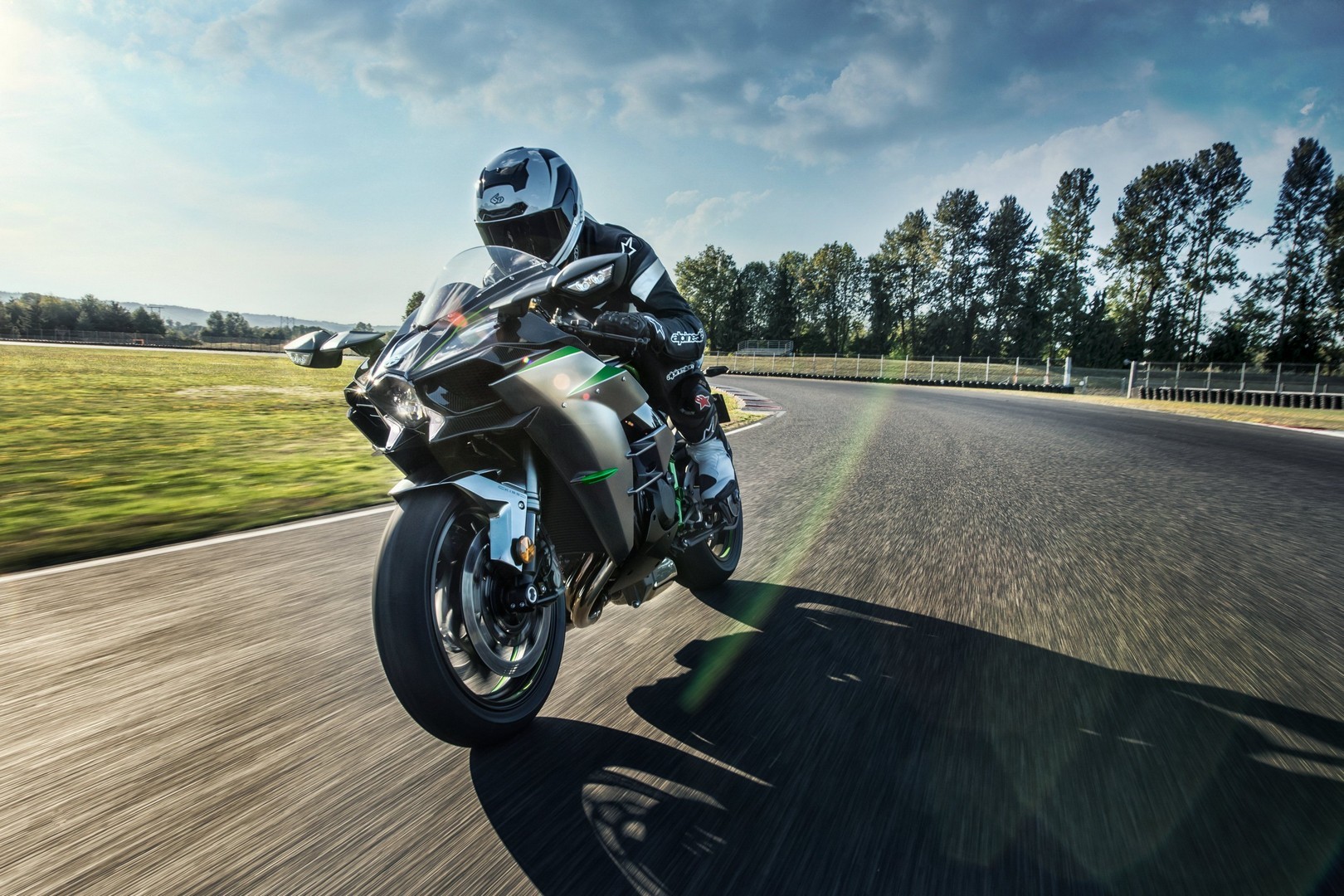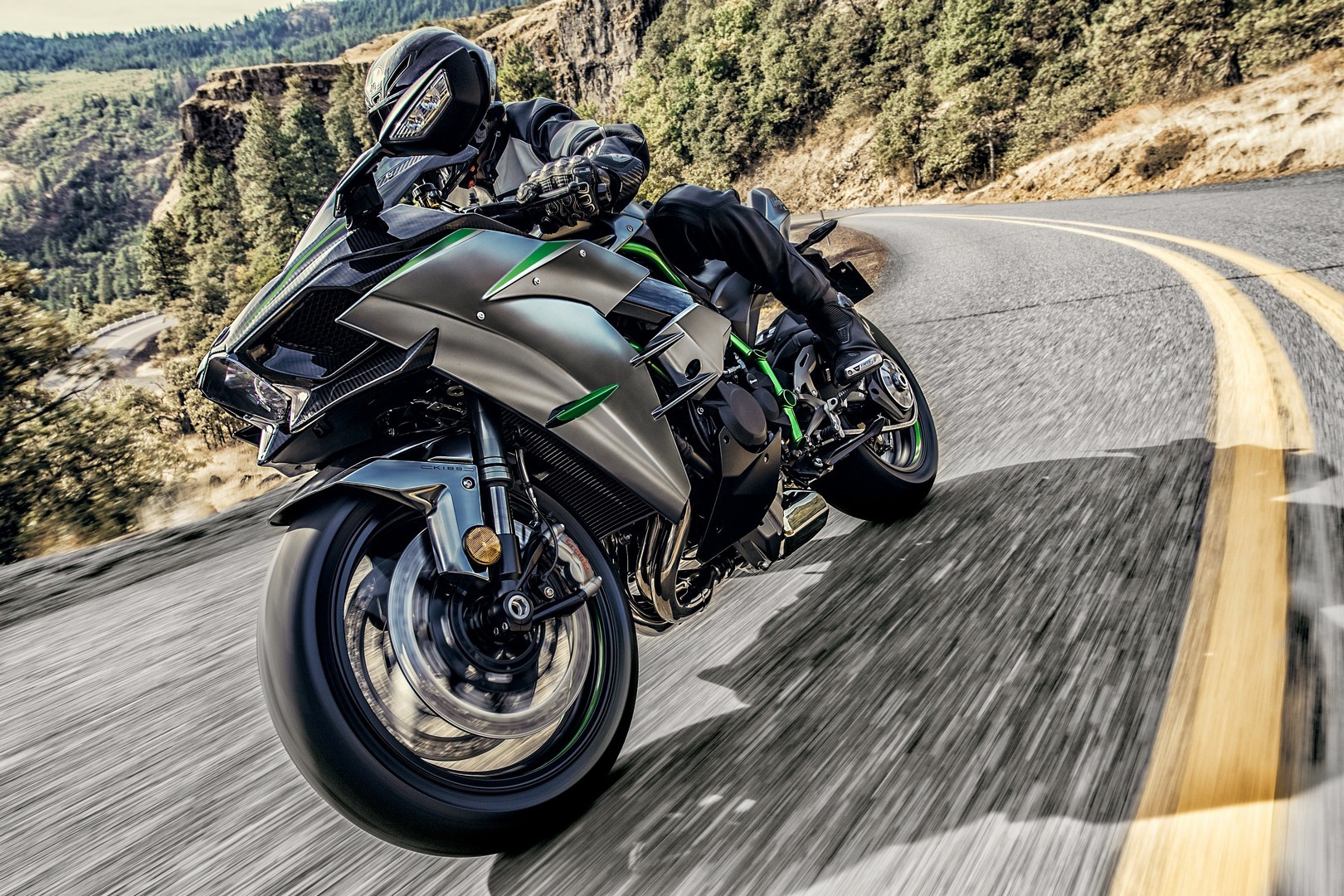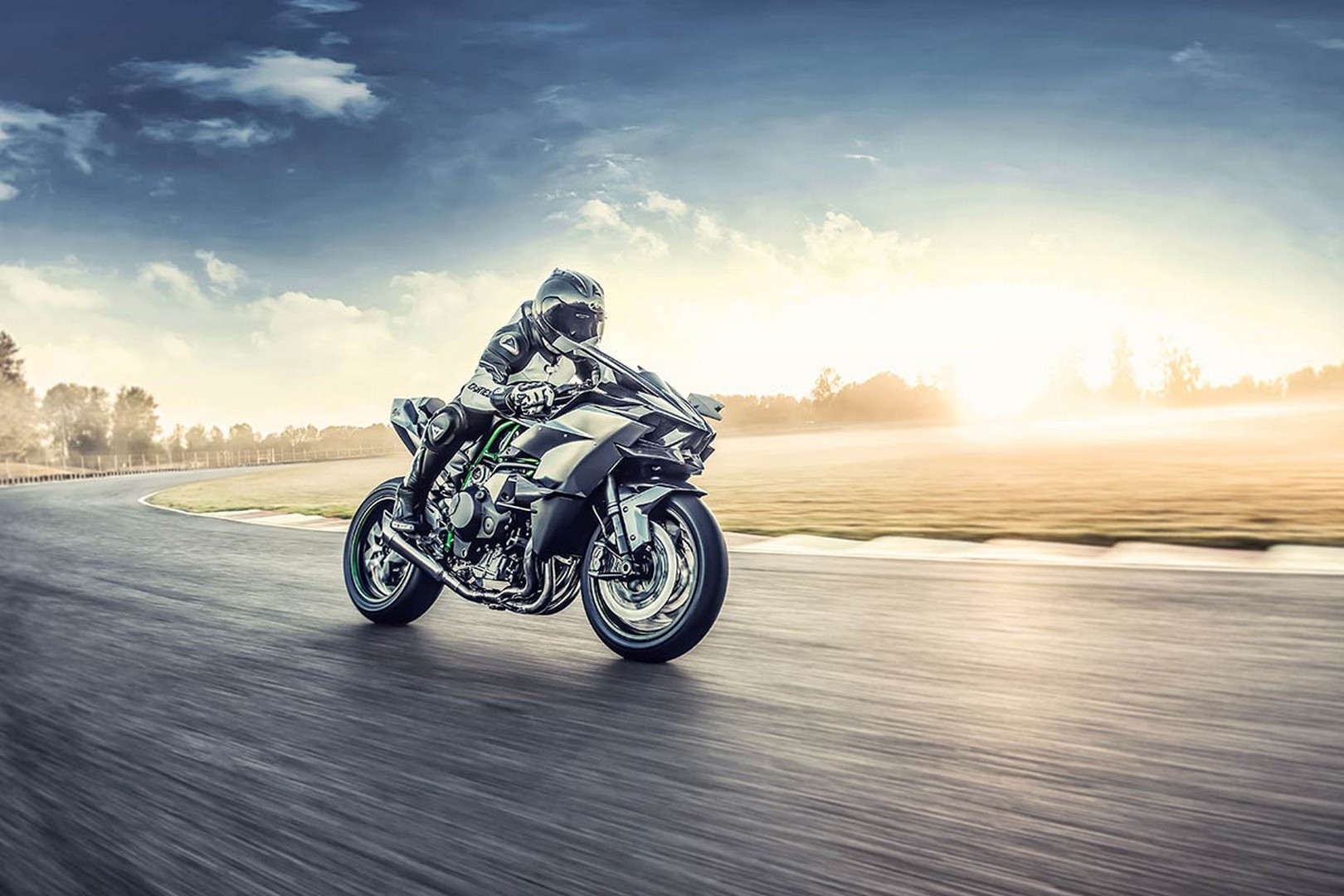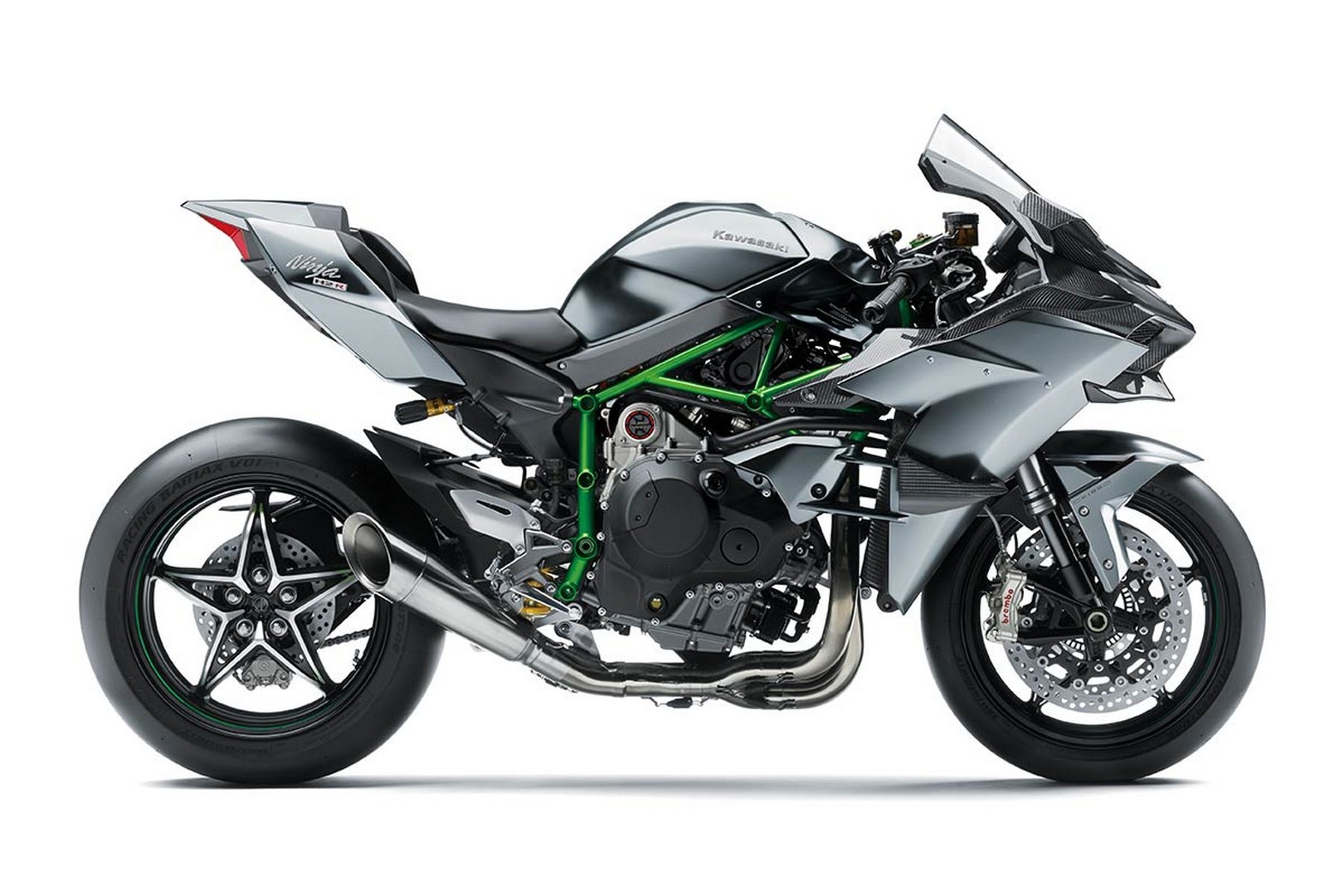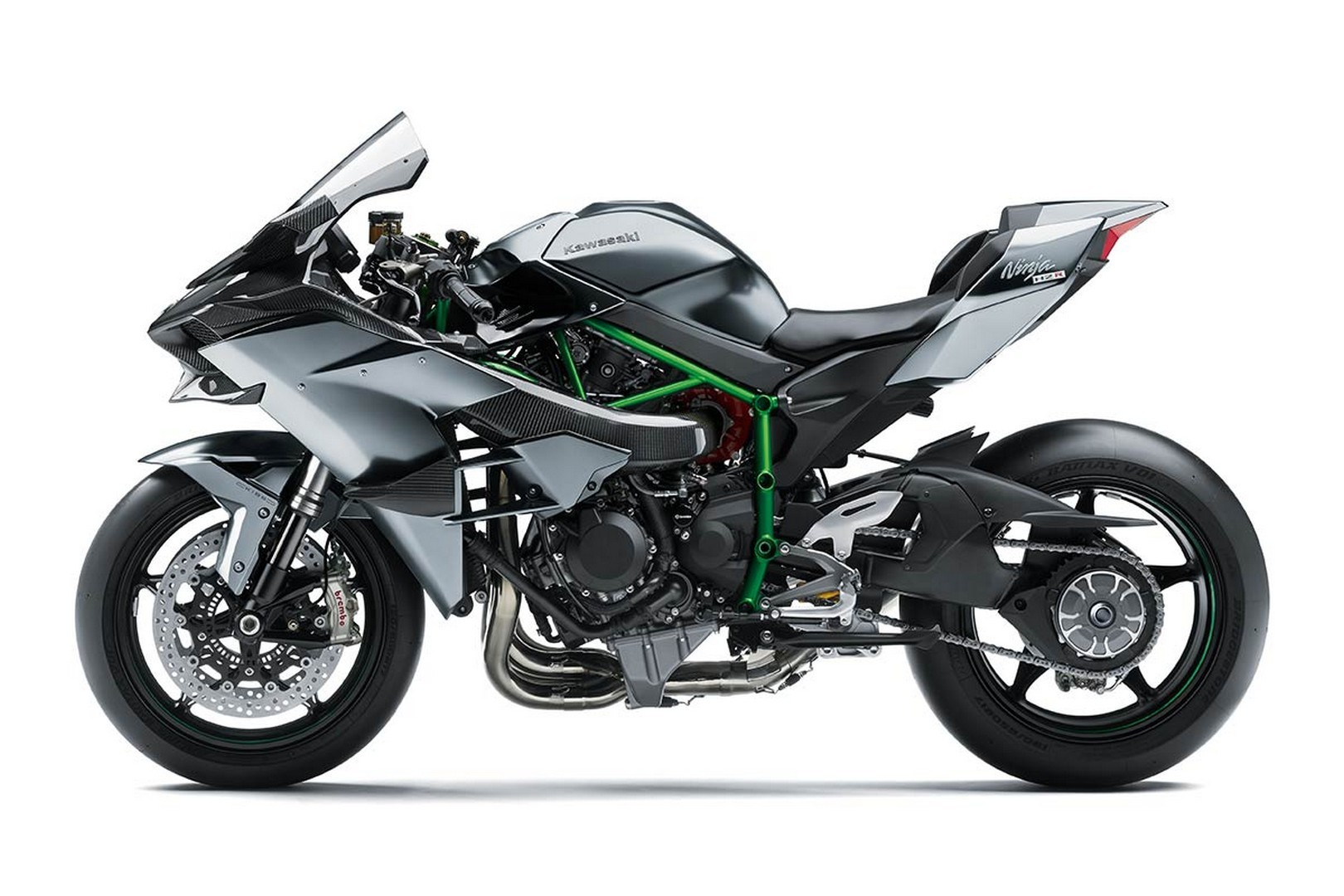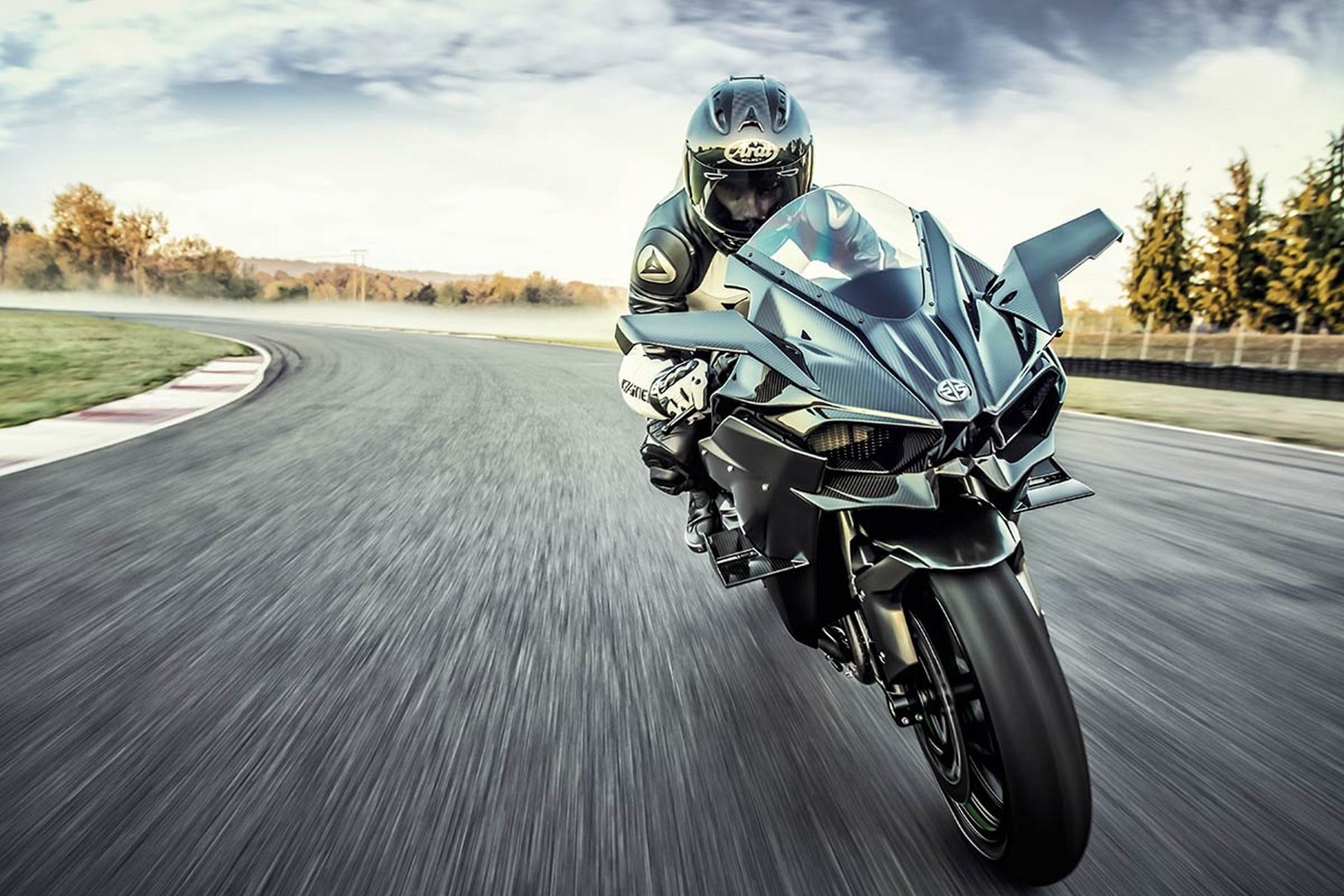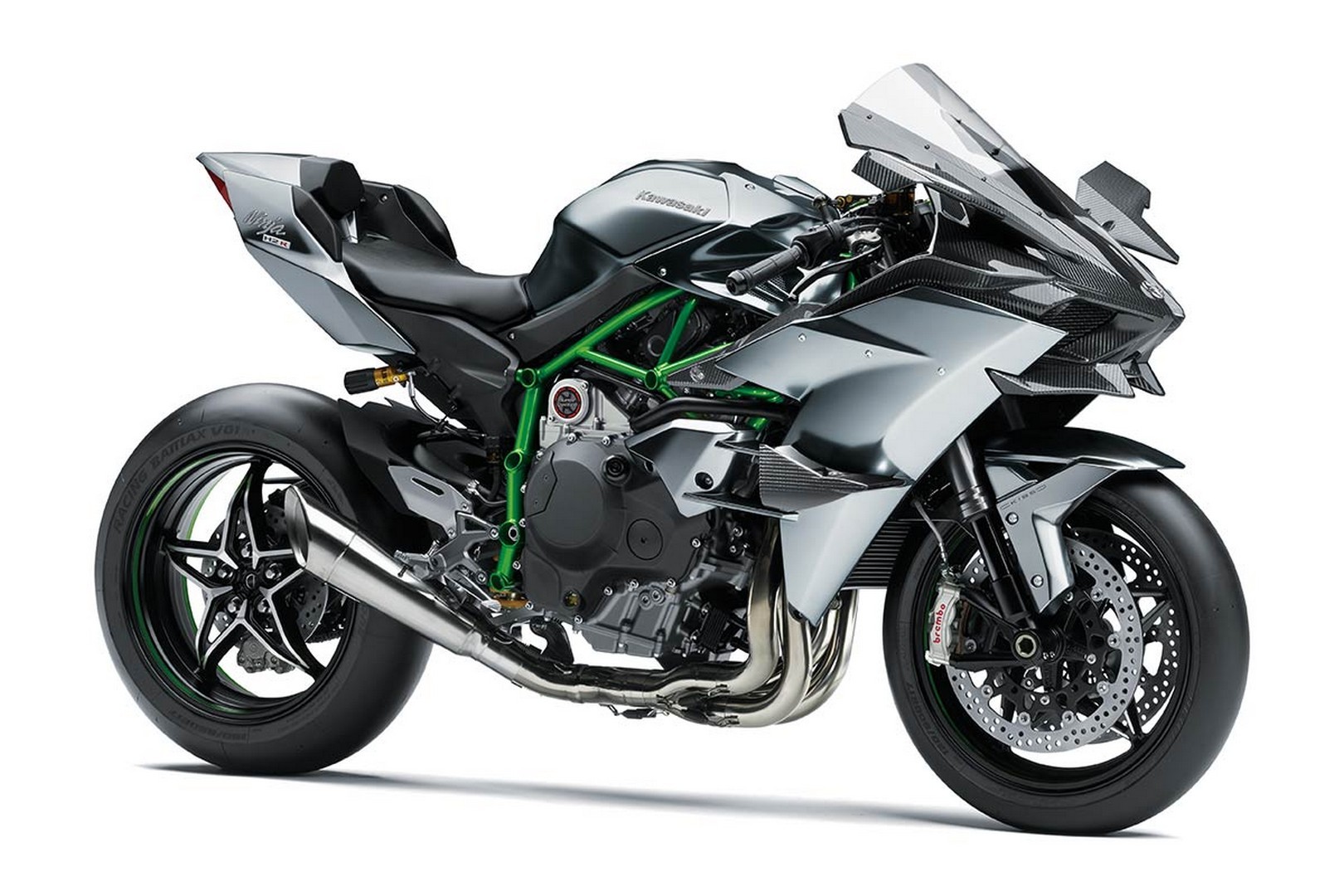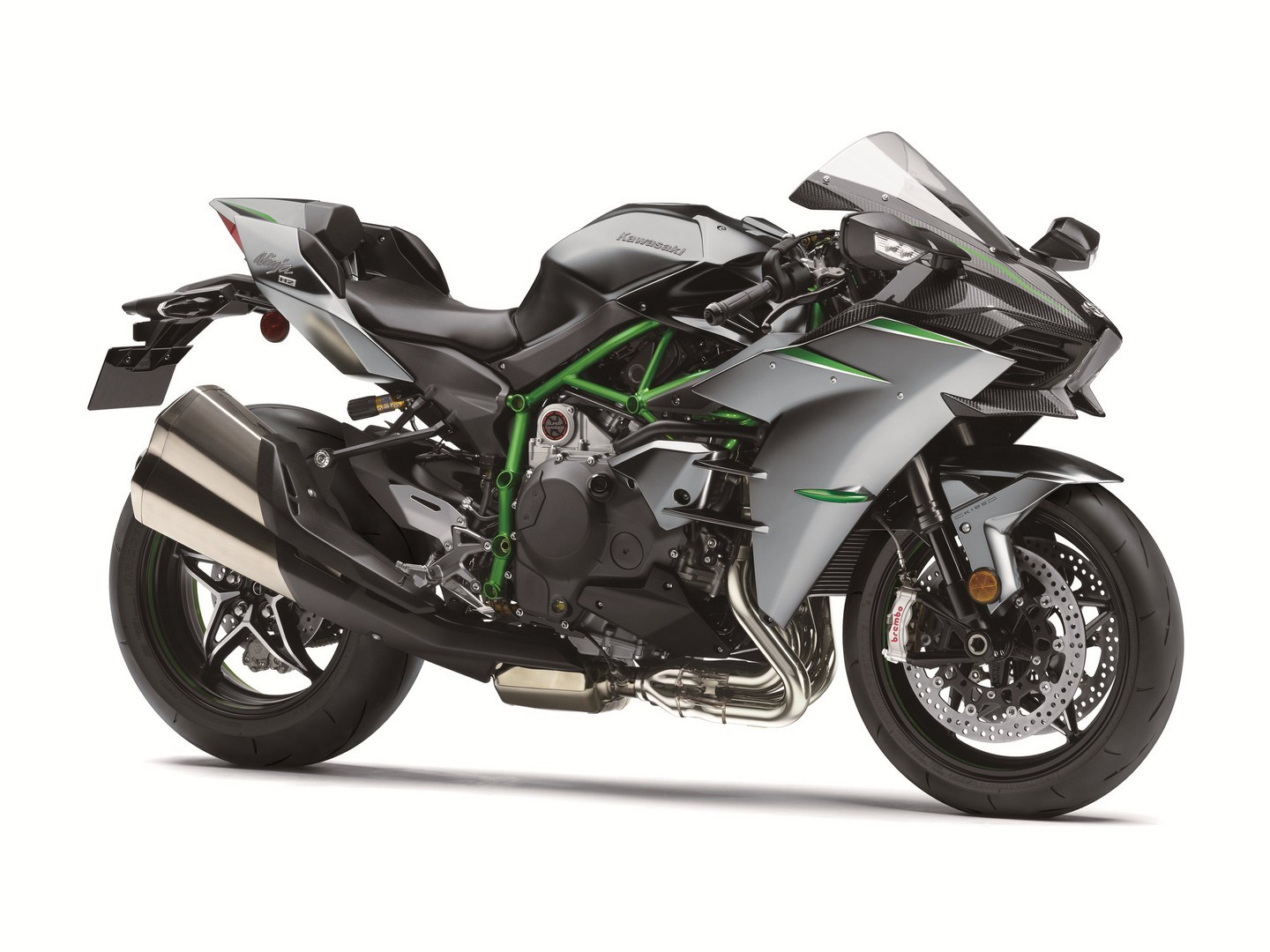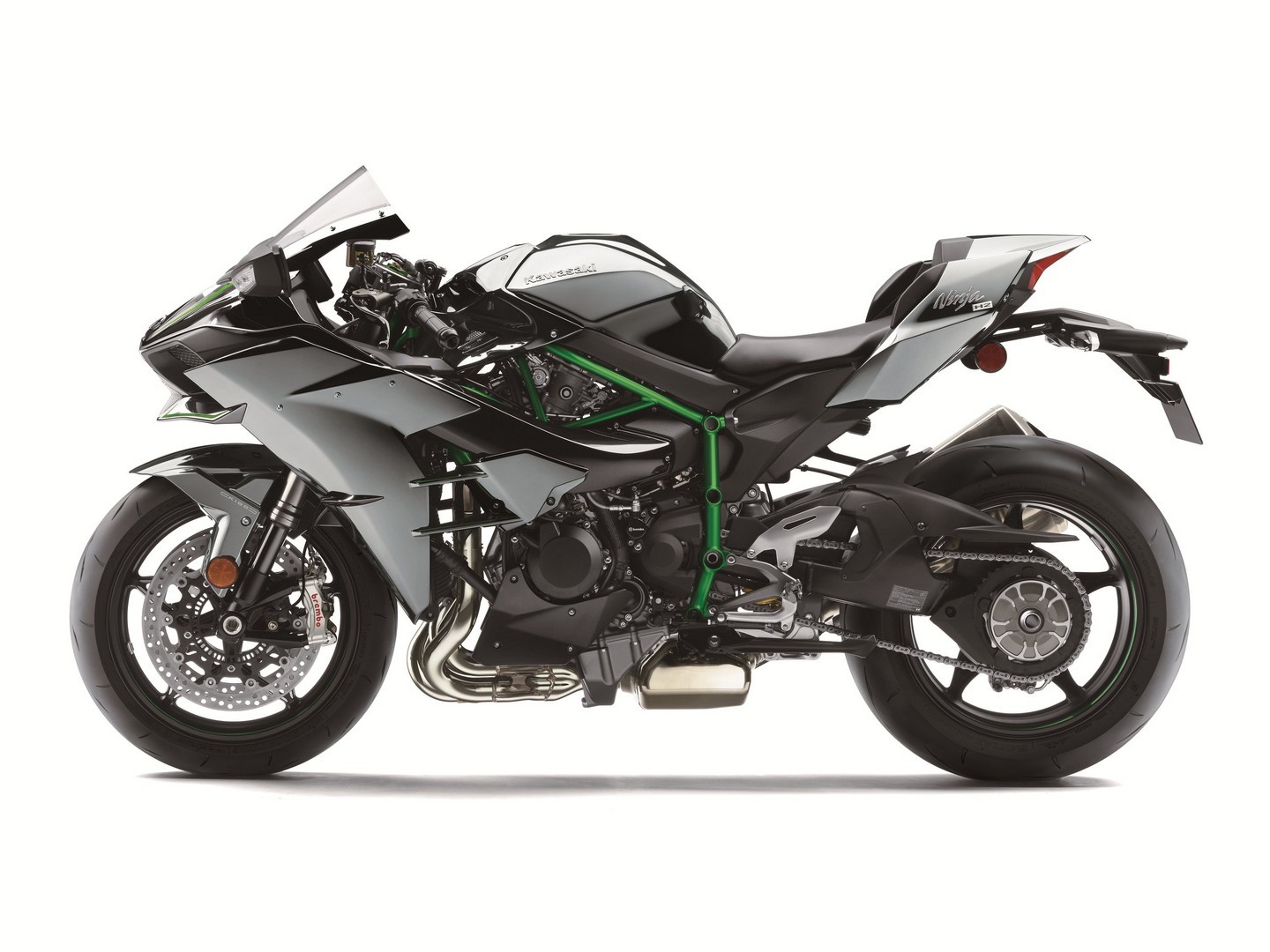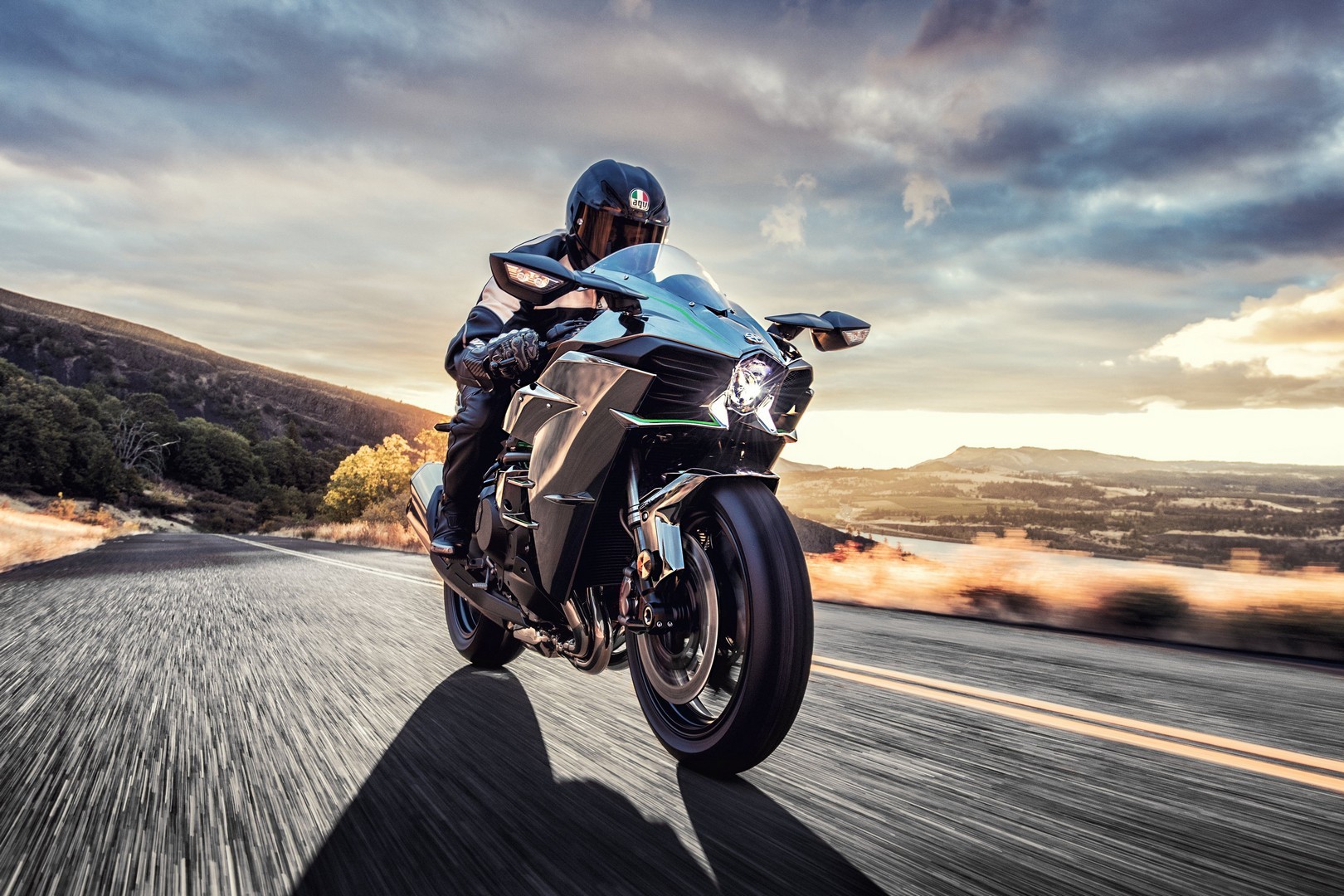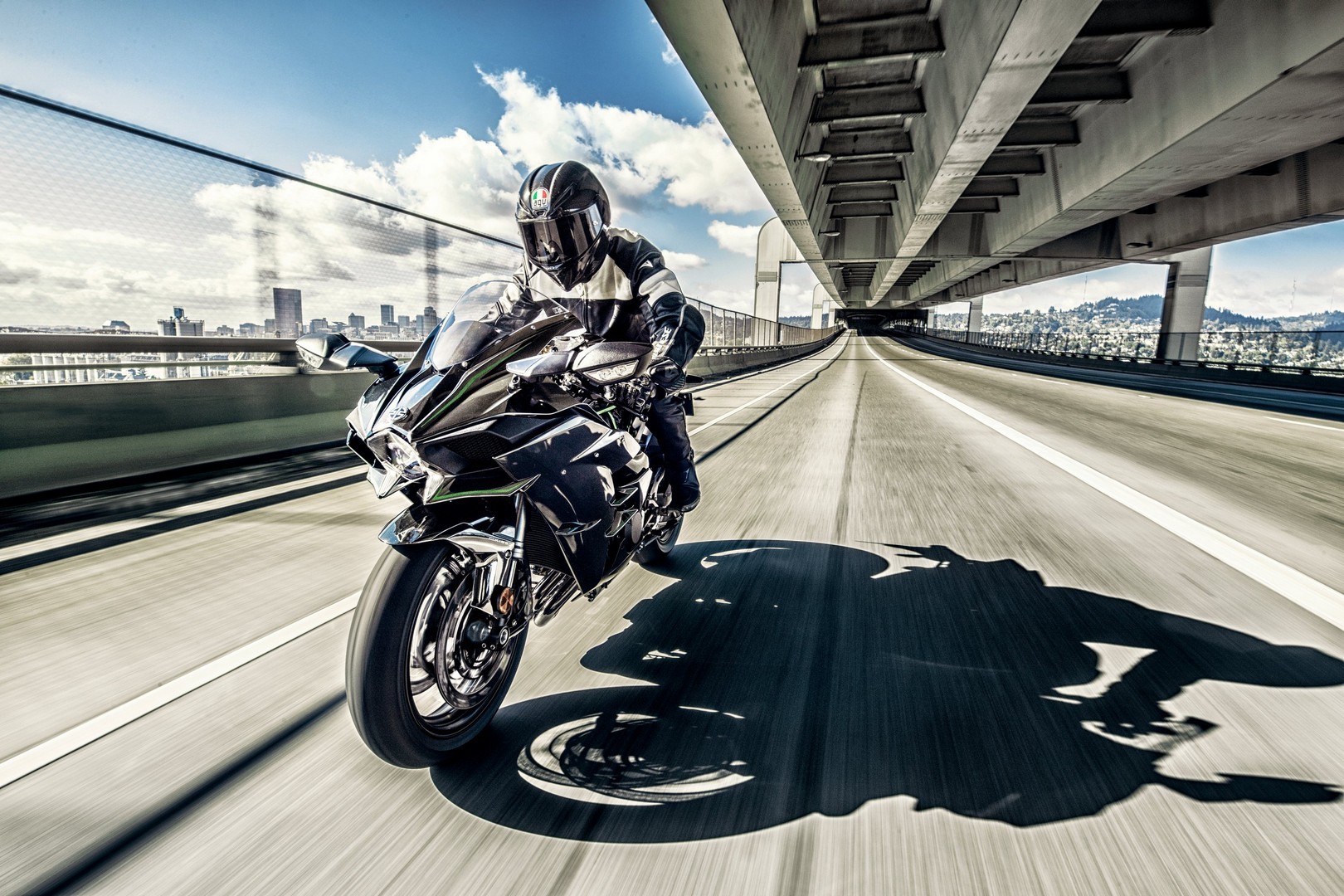The 2023 Kawasaki Ninja H2/H2 Carbon Combine Top Perfomance And Amazing Looks
Contents
At the heart of the 2023 Kawasaki Ninja H2 is a 998cc liquid-cooled, four-stroke engine that produces an astounding 200 horsepower! While it looks like other H2s in Kawasaki’s 2023 lineup, it has it’s own unique spec and trim available. Thanks to its supercharger, this engine delivers massive amounts of torque across a broad range of RPMs, allowing the rider to accelerate with breathtaking speed.
The Kawasaki Ninja H2 is also equipped with a range of advanced features that enhance its performance and handling. These include a high-performance Brembo braking system, fully adjustable suspension, and Kawasaki’s advanced traction control system, which helps the rider maintain control in a variety of riding conditions. The bike’s aggressive styling makes it a true head-turner wherever you go. Looking to get a bit more attention and weight savings? Get the H2 Carbon which includes carbon fiber bodywork. If you’re looking for a Japanese motorcycle that can deliver an exhilarating ride every time you hit the road and look amazing doing it, then the Ninja H2 is definitely worth considering.
The 2023 Kawasaki Ninja H2 starts at H2 $31,500 USD, Carbon $35,000 / H2 $37,500, Carbon $41,5900 CAD
On this page: we’ve curated specs, features, news, photos/videos, etc. so you can read up on the new 2023 Kawasaki Ninja H2 in one place.
Model Overview
General Info
- Price: H2 $31,500 USD / $37,500 CAD and Carbon $35,000 USD / $41,5900 CAD
- Key Features:
-
- ABS/QSKTRC/KEBC
- 998cc supercharged engine
- Smartphone Connectivity
- TFT dash
Main Specs
- Engine: 998cc, liquid-cooled, 4-stroke, DOHC 16-valve in-line four
- Power: 228 horsepower
- Torque: 104.9 lb-ft
- Weight: 524.8 lbs (238 kgs)
- Seat Height: 32.5 inches (825 mm)
Competitors
- Aprilia RSV 4
- BMW S 1000 RR
2023 Kawasaki Ninja H2/H2 Carbon Specifications
ENGINE |
||
| Engine | 998 cc, Liquid -cooled, 4-stroke, In-Line Four, DOHC, 16-valve | |
| Power | 228 Hp | |
| Bore x Stroke | 76.0 x 55.0mm | |
| Compression Ratio |
8.5:1
|
|
| Fuel System | DFI® with 50mm throttle bodies (4) with dual injection ; Kawasaki Supercharger | |
| Starter | Electric | |
| Maximum Torque | 104.9 lb-ft @ 11,000 rpm | |
DRIVETRAIN |
||
| Clutch | ||
| Transmission | 6-speed, return, dog-ring | |
| Final Drive | Sealed chain | |
CHASSIS |
||
| Suspension Front | 43mm inverted fork with adjustable rebound and compression damping, spring preload adjustability and top-out springs/4.7 in | |
| Suspension Rear | Uni-Trak®, Öhlins TTX36 gas charged shock with piggyback reservoir, 24-way compression and rebound damping and adjustability and hand-turn spring preload adjustability, and top-outspring/5.3 in | |
| Brakes Front | Dual radial-mount, opposed 4-piston Brembo Stylema® calipers, dual semi-floating 330mm discs, KIBS ABS | |
| Brakes Rear |
Opposed 2-piston calipers, single 250mm disc, KIBS ABS
|
|
| Tires Front | 120/70 ZR17 (58W) | |
| Tires Rear | 200/55 ZR17 (78W) | |
| Fuel Tank Capacity | 4.5 gal | |
| Color |
Mirror Coated Black
|
|
ELECTRICAL |
||
| Ignition | Digital | |
| Spark Plugs | ||
| Headlight | LED | |
| Tail Light | LED | |
DIMENSIONS |
||
| Overall Length | 82.1 in | |
| Overall Width | 30.3 in | |
| Overall Height | 44.3 in | |
| Wheelbase | 57.3 in | |
| Ground Clearance | 5.1 in | |
| Seat Height | 32.5 in | |
| Curb Weight | 524.8 lb | |
WARRANTY |
||
| Warranty | 12 Month Limited Warranty | |
| Kawasaki Protection Plus™ (optional) | 12, 24, 36 or 48 months | |
2023 Kawasaki Ninja H2/H2 Carbon Features
Assist & Slipper Clutch
Under normal operation, the assist cam functions as a self-servo mechanism, pulling the clutch hub and operating plate together to compress the clutch plates. This allows the total clutch spring load to be reduced, resulting in a lighter clutch lever feel when operating the clutch.
When excessive engine braking occurs – as a result of quick downshifts (or an accidental downshift) – the slipper cam comes into play, forcing the clutch hub and operating plate apart. This relieves pressure on the clutch plates to reduce back-torque and helps prevent the rear tire from hopping and skidding. This race-style function is particularly useful when sport or track riding.
Economical Riding Indicator
While effective vehicle speed and engine speed may vary by model, paying attention to conditions that cause the “ECO” mark to appear can help riders improve their fuel efficiency – a handy way to increase cruising range. Further, keeping fuel consumption low also helps minimize negative impact on the environment.
Electronic Throttle Valves
Electronic throttle valves also enable more precise control of electronic engine management systems like S-KTRC and KTRC, and allow the implementation of electronic systems like KLCM, Kawasaki Engine Brake Control, and Electronic Cruise Control.
Kawasaki Engine Brake Control
KLCM (Kawasaki Launch Control Mode)
KCMF (Kawasaki Cornering Management Function)
• S-KTRC/KTRC (including traction management and wheel lift management)
• KLCM (including traction management and wheel lift management)
– Designed to optimize acceleration from a stop
• KIBS (including pitching management and corner braking management)
• Kawasaki Engine Brake Control
KTRC (Kawasaki Traction Control)
Less intrusive modes maintain optimum traction during cornering. Designed with sport riding in mind, they facilitate acceleration out of corners by maximizing forward drive from the rear wheel. And because Kawasaki’s sophisticated software bases its dynamic analysis on the chassis’ orientation relative to the track surface (rather than relative to a horizontal plane), it is able to take into account corner camber, gradient, etc., and adapt accordingly.
In the more intrusive modes (and for some models, in any mode), when excessive wheel spin is detected, engine output is reduced to allow grip to be regained, effectively enabling riders to negotiate both short, slippery patches (train tracks or manhole covers) and extended stretches of bad roads (wet pavement, cobblestone, gravel) with confidence.
Models equipped with IMU incorporate chassis-orientation feedback to offer even more precise management.
Smartphone Connectivity
Supercharged Engine
One of the greatest benefits of designing the supercharger in-house and tailoring its design to match the engine’s characteristics was that engineers were able to achieve high-efficiency operation over a wide range of conditions – something that would not have been possible by simply dropping in or trying to adapt an aftermarket automotive supercharger.
The importance of high efficiency in a supercharger is that, as the air is compressed, power-robbing heat gain is minimal. And while many superchargers are able to offer high-efficiency operation in a very limited range of conditions, the Kawasaki supercharger offers high efficiency over a wide range of pressure ratios and flow rates – meaning over a wide range of engine speeds and vehicle speeds. This wide range of efficient operation (similar to having a wide power band) easily translates to strong acceleration. The supercharger’s high efficiency and minimal heat gain also meant that an intercooler was unnecessary, greatly saving weight and space, and enabling the engine’s compact design.
2023 Kawasaki Ninja H2/H2 Carbon Photos
2023 Kawasaki Ninja H2/H2 Carbon Videos
2023 Kawasaki Ninja H2 review by Yammie Noob:
2023 Kawasaki Ninja H2 Review by JoeSTi:
Links
Kawasaki Official Websites



